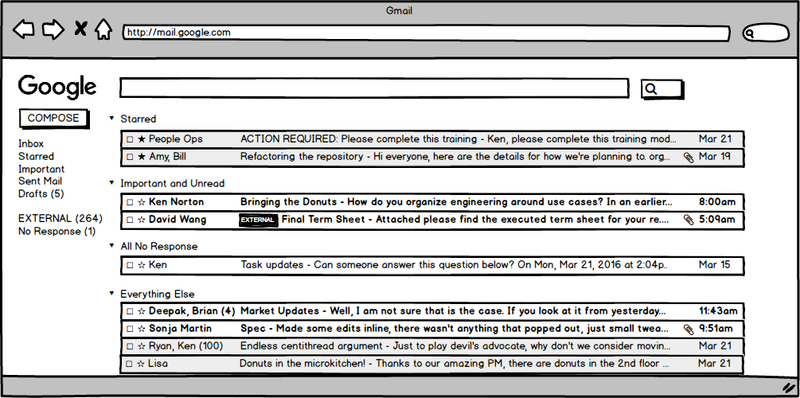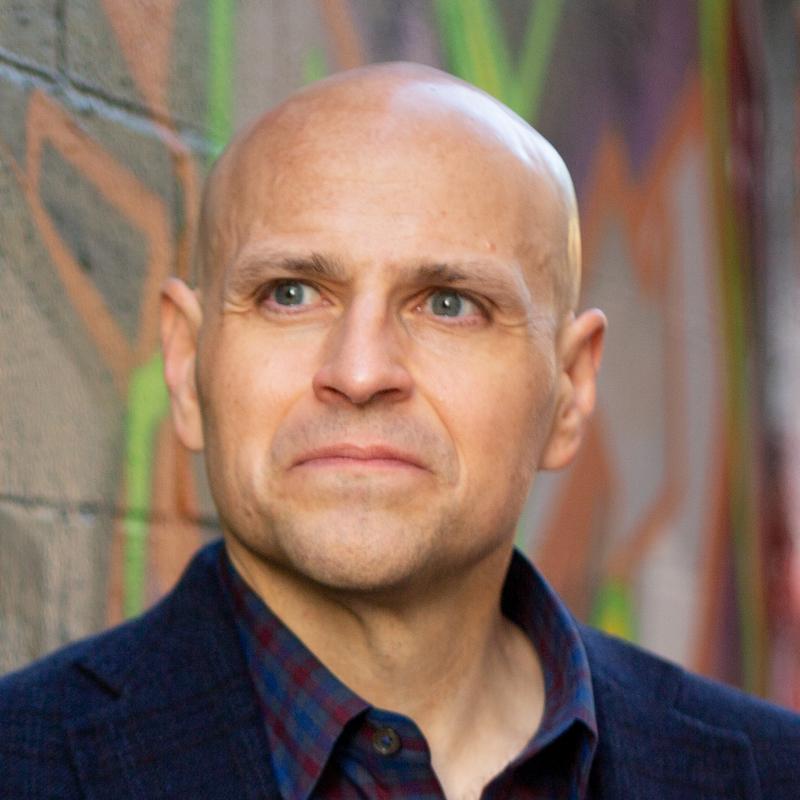
A friend once joked that product management is 20% talking and 80% email. Even with modern collaboration tools like Slack, most PMs I know still send and receive lots of email. In my years at Google, I’ve developed a system that works for me. Several have asked me to share details (obviously, we use Gmail through Google for Work).*
I don’t care about “inbox zero,” I care about “unread zero.” In email there are filers and pilers, and I’m a piler. That means my “inbox” contains tens of thousands of emails. I try to keep the number of unread emails in my inbox to zero.
Here’s what I use:
- Gmail Filters and Mute – I actively filter email from the inbox if it’s not deserving of my attention. Examples would be notifications from the automated build system, internal discussion lists, bug notifications, etc. I set up a filter them and have them “skip the inbox.” I also relentlessly mute any conversations that don’t merit my attention. Muting and filtering (rather than unsubscribing) keeps stuff out of your inbox but means you can still search for it later.
- Starred Emails – I star emails as a “do later” tool. If an email needs a longer, more thoughtful reply I’ll star it and deal with it later using a GTD-style approach. If it has information I need to refer back to in a day, I’ll star it. Keeping my starred emails at the top of my inbox and in my face forces me to keep the list small and manageable.
- Priority Inbox – I enable Gmail’s Priority Inbox and use it as an attention signal. I look at high priority email at least once an hour, then low once or twice a day. Do not use Priority Inbox as a spam filter – always review your lower priority emails. Priority Inbox gets better the more you use it, so make sure you give it feedback by marking and unmarking emails as high priority.
- Needs Follow-up – As a PM, you send lots of emails and forget. Sometimes it’s hard to know when a request hasn’t gotten a response. Boomerang is a good tool for this, and there are lots of others. If your company’s security policy prohibits the use of third-party tools, I recommend Jonathan Kim’s gmail-no-response Apps Script. It’s what I use. I set up a trigger to run the script every night, reviving anything sent more than 5 days ago that hasn’t gotten a reply. I’ve customized the script a bit to remove false positives from automated build systems, vacation responders, and the like, so you might need to give it a few weeks of tuning.
- Labeling External Mail – To help me prioritize, and make sure I never accidentally screw up, I created a special filter to give email from outside my company a big red
EXTERNALlabel. I set up two different filters:from:-@example.comandto:-@example.comto catch conversations that include people from outside my domain (obviously, substituteexample.comfor your domain). - Inbox Sections – I use inbox sections with these four groupings: Starred, Important and Unread, All No Response (unresponded emails picked up by Jonathan’s script), and Everything Else. You can see what my inbox looks like here.
- Mobile – Because it’s so customized, I use the mobile Gmail app on both iOS and Android to keep the experience consistent. (Unfortunately, no inbox sections on mobile.) I star a bit more aggressively on mobile to mark email that deserves a longer reply from a keyboard.
* For my personal email – heavy on mailing lists and promotions, low on sending – I use, and love, Inbox by Gmail.
What works for you?
Good Reads
There’s an asymmetry to failure: a positive side where we learn from it, but a negative where it can be used as a weapon against us. This McKinsey Quarterly interview with Pixar co-founder and current president of Disney Studios Ed Catmull is terrific from start to finish. (And if you haven’t yet read Ed’s book Creativity Inc. please do so.)
“But the skills required to be a designer, a developer, or a business leader are very different from the skills required to create alignment between designers, developers, and business leaders. UX, tech, and business are areas of subject matter knowledge that might be relevant to some product managers, but they are not the actual skills required to be a great product manager.” Matt LeMay presents A New Skill Model for Product Managers.
“Tech debt is probably the most common cause of conflict. Some people fail to appreciate work that doesn’t directly impact the UI.” Giff Constable has some advice for engineering leads on how to work well with their product management counterparts.
“Strategic thinking cannot be a side project done in between meetings.” So says John Vars, in The Bipolar Nature of Product Management.
